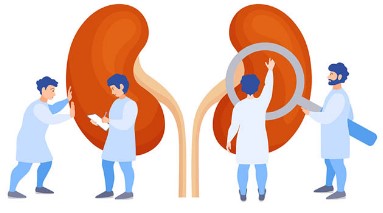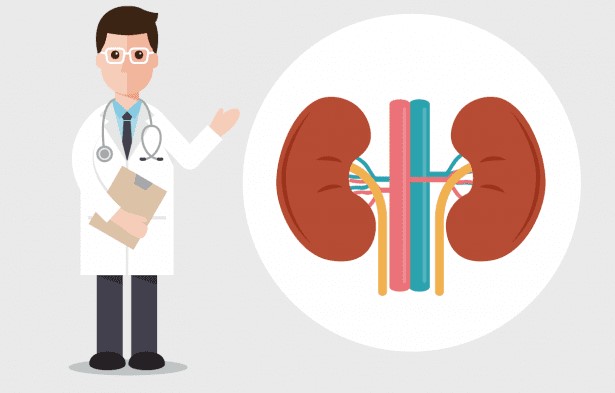When to Start Dialysis Creatinine Level? That is a question that many people ask when they have been diagnosed with kidney problems.
Dialysis treatment removes waste products from the body. While your kidneys can’t do it themselves.
It’s not always necessary, but when your kidneys begin to fail. You will need dialysis to survive.
This post will discuss when to start dialysis creatinine level and when waiting could lead to serious consequences.
What is creatinine level, and what does it do
Creatinine is a waste product that your kidneys remove from the blood to create urine. It’s one of several markers for kidney function.
The creatinine level in your body tells doctors if there are any problems with your kidneys. Or, how well they’re working.
Doctors measure creatinine levels in milligrams per deciliter (mg/dL). If you’ve had an injury or illness that may have caused some kidney damage. Then this number will be higher than normal.

Some other conditions can also cause creatinine levels to go up. These are less common and more serious: like diabetes, IBD, PKD and NS.
When your kidneys fail, your creatinine levels remain high all the time. It is because you can’t filter waste products out anymore.
Your doctor will use this test to monitor how well dialysis is working overtime. Creatinine levels are also used for patients.
Those who suffer from kidney failure or end-stage renal disease (ESRD). That is when patients are put on dialysis to survive.
Some people prefer not to go through the trouble. Others want it so badly that they wait too long before starting treatment.
When to Start Dialysis Creatinine Level
Dialysis is a treatment for people with kidney failure. A patient’s creatinine level, which measures how well their kidneys are working.
Also, the amount of waste in the blood will determine when they should start dialysis.
If you have end-stage renal disease (ESRD) and your doctor has told you that you need to begin dialysis therapy, then read on!
Dialysis helps cleanse a person’s blood if their kidneys can no longer do so effectively enough by removing excess fluid from the body and filtering out creatinine waste.
Dialysis can administer via many different methods, but the most common is hemodialysis.
The patient’s blood flows out of their body and through an external filter (the dialyzer).
Toxins are removed from the blood through this machine to prevent complications like fluid overload and high potassium levels in the bloodstream.
What is CKD creatinine level, and how is it measured?
Chronic kidney disease (CKD) is a progressive loss of kidney function over time. When your kidneys fail, toxins start to build up in the blood. While you’re losing vital nutrients that should be going to other parts of your body.
The higher a patient’s creatinine levels are, the more kidney damage they have suffered. Many things can lead to CKD, including diabetes, high blood pressure and a family history of kidney problems.
If you’ve just started seeing your doctor for high creatinine levels in your blood, then they need to know why.
A complete medical history will give them the information they need to determine how well your kidneys are working.

If you have CKD, your creatinine levels will tell your doctor if it’s severe enough to require treatment.
CKD has five stages, each with its creatinine level benchmarks. The higher your number is, the more kidney damage you’ve suffered.
Not sure if your CKD creatinine level is high enough to qualify for treatment? Unfortunately, there’s no way to avoid this one completely.
Not everyone with high levels of creatinine will need dialysis then. There are many other factors besides creatinine levels that contribute to the need for treatment.
After all, over half of CKD cases can prevent by taking better care of your health in the first place.
What is the creatinine level for kidney failure?
Kidney failure is the term used when your kidneys are not working well enough to clean out waste products from your blood.
These waste products can build up in your body, which makes you sick and tired. There are many causes of kidney failure, but the most common cause is diabetes mellitus type 2.
That means that people with diabetes have too much sugar in their blood for a long time, so it becomes thick and sticky like honey or molasses.
Over time, this thickened blood damages your kidneys until they stop functioning properly.
Creatinine is a type of waste that comes from the kidneys. The creatinine level in our body reflects how good our kidneys are working.
When someone has kidney failure, the creatinine level in their blood will be higher than normal.
That is because their kidneys can’t filter out waste products as well as they normally do.
When not to start dialysis
When to start dialysis creatinine level, it is important to know, as well as you should know when not to start dialysis.
As we mentioned before, some people wait until their creatinine levels reach 8 mg/dL before starting dialysis.
If you’re older than 70 years old, then your doctor might want to wait even longer because of the additional risks involved in starting treatment too soon.
People over 70 are at higher risk for heart problems, so it’s safer to wait until their creatinine levels reach 8 mg/dL to have a good chance of going through treatment safely.
People who have certain infections or lack a will to live may benefit from not starting dialysis too soon.
Infections can lower creatinine levels, and patients can’t always handle the physical stress involved in undergoing treatments when they’re seriously ill.
What are some symptoms of a high creatinine level?
High creatinine levels are a sign of kidney dysfunction. In adults, high creatinine levels can be caused by dehydration, diabetes mellitus and heart disease.
Some common symptoms include fatigue, weakness, nausea and vomiting. The severity of the symptoms varies depending on how much your kidneys have been damaged and what is causing it.
You should see a doctor as soon as possible if you experience any of these symptoms or if you know for sure that your creatinine level is above 2 milligrams per deciliter (mg/dL).
Can you get rid of your high creatinine level naturally?
Creatinine is a natural byproduct of muscle metabolism and find in the blood. It’s usually filtered out and eliminated from your body.
But if you have too much creatinine, it can signify that your kidneys are not working as well as they should.
High levels of creatinine can cause other problems, such as
-dehydration,
-nausea or vomiting,
-weakness or fatigue,
-abdominal pain or swelling,
-headache or lightheadedness.
Types of dialysis
Dialysis is a process that removes waste products from the blood. In kidney failure, this process becomes difficult because the kidneys cannot do their job. There are two types of dialysis:
- hemodialysis and
- peritoneal dialysis.
What is hemodialysis?
Hemodialysis usually uses if your kidneys fail because of something like diabetes or another chronic condition.
Hemodialysis works by filtering your blood outside of your body in a dialysis machine.
The kidneys are very good at filtering waste products from the blood, but they can’t filter out excess fluid or electrolytes.
During hemodialysis, blood is pumped from a patient’s body into the dialyzer. That separates toxins and fluids from the blood and returns clean blood into a patient’s vein.
How long do hemodialysis treatments last?
The length of dialysis treatment is different for each patient and depends on how well their kidneys are working.
Most patients’ blood flows through the dialysis machine for about 4 to 8 hours.
The frequency of treatments depends on how well a patient’s kidneys work and what other health problems a patient may have.
What is peritoneal dialysis?
Peritoneal dialysis also called continuous ambulatory peritoneal dialysis (CAPD), is usually used if your kidneys have failed because of something other than diabetes.
During peritoneal dialysis, a thin tube is put in your belly. The small cut goes through the skin and into the space between the soft part of your body and the hard part of your body.
A dialysis solution, called dialysate, is infused through the catheter and absorbs waste products from your body.
What are the different kinds of peritoneal dialysis, and how do they work?
Peritoneal dialysis (PD) is a treatment for people with end-stage renal disease (ESRD). It allows the patient to do home hemodialysis if they are unable to perform in-center dialysis.
There are three kinds of peritoneal dialysis:
- continuous ambulatory peritoneal dialysis,
- automated intermittent peritoneal dialysis and
- tidal therapy.
Each has different components that allow for fluid removal from the body.
The purpose of each type is also different. Continuous ambulatory peritoneal dialysis focuses on removing excess water and toxins.
On the other, automated intermittent peritoneal dialysis removes excess fluids but not toxins or wastes like urea and creatinine.
Tidal therapy only works when there is extra fluid around the stomach and intestines.
Frequently Asked Questions
What is dialysis?
Dialysis is a treatment for kidney failure. If your kidneys fail, toxins and fluids accumulate in the body because the kidneys cannot remove them anymore.
What is the normal creatinine level?
Creatinine blood test results fall between 0.6 and 1.2 milligrams per deciliter for women and 0.
What is needed to prepare for dialysis?
If you are about to start dialysis, you must first talk with your doctor about what medications you take.
It would help if you also emptied the catheter and the tubing of blood or fluid before starting dialysis.
Your doctor or nurse can tell you what else you need to do before your first dialysis session.
Are there any complications to starting dialysis?
You may need to adjust your diet if you are about to begin dialysis.
Your doctor will ask you to limit your fluid intake and restrict the amount of potassium, sodium, phosphorus, and protein in your diet.
What does dialysis do?
Dialysis helps clean the blood when your kidneys are not working well.
Dialysis can also use to remove excess fluids from your body due to medication or illness.
Is there any way to reverse kidney failure?
Unfortunately, kidney failure is irreversible. If you have kidney failure, it is important to manage your condition as best as you can.
Living a healthy lifestyle and following your doctor’s instructions will help maintain the quality of life you have.
Is dialysis uncomfortable?
Most patients find that dialysis is not as uncomfortable as they had expected.
The actual process of dialysis usually lasts about four hours and takes place over two separate sessions.
Can dialysis patients continue to work?
Yes, dialysis patients can continue to work. You will need to let your employer know about your condition and.
What are the side effects of dialysis?
Depending on the type of dialysis you undergo, there are some common side effects of dialysis.
Your doctor can tell you what side effects you may experience.
Thanks for reading this article When to Start Dialysis Creatinine Level. Suppose you have any questions feel free to ask.




















